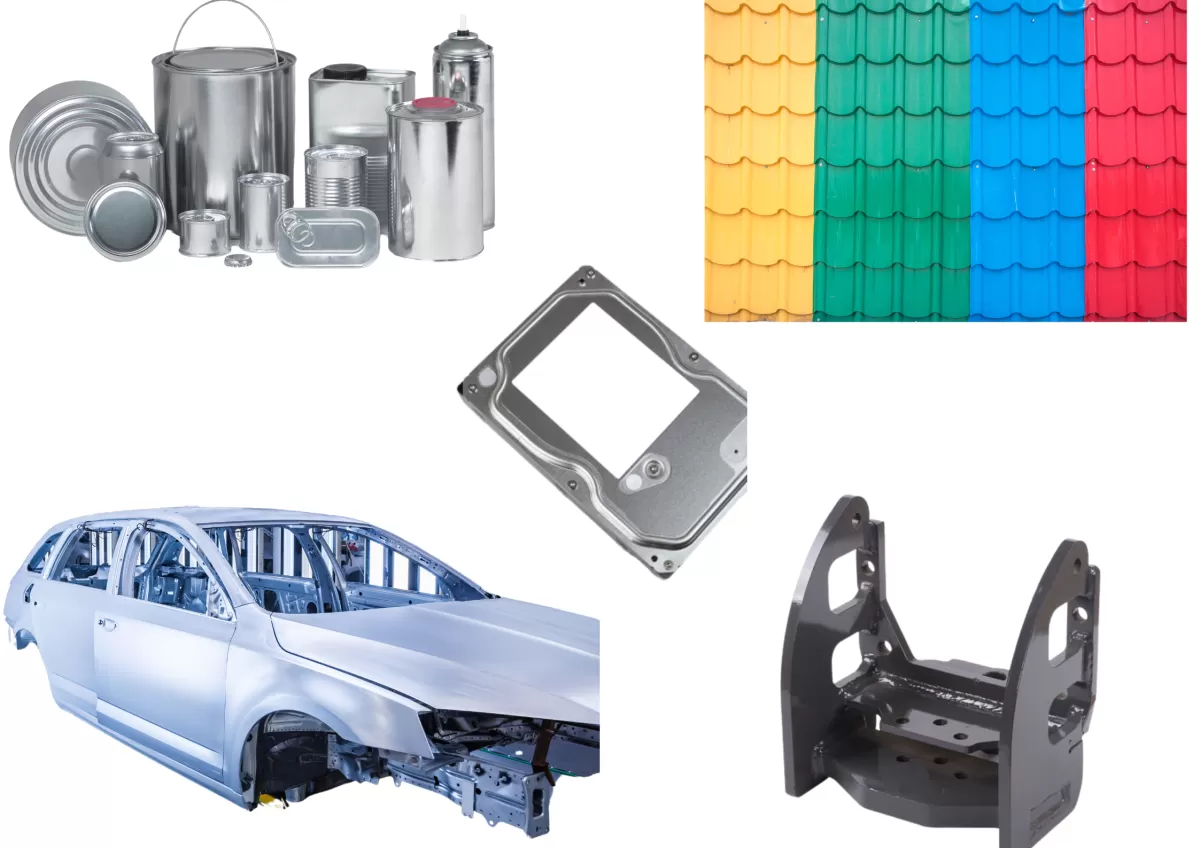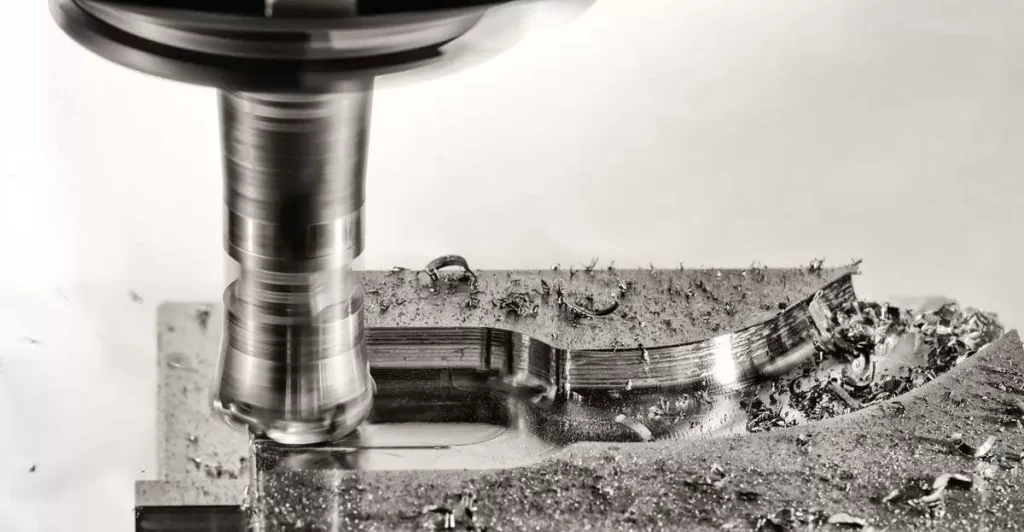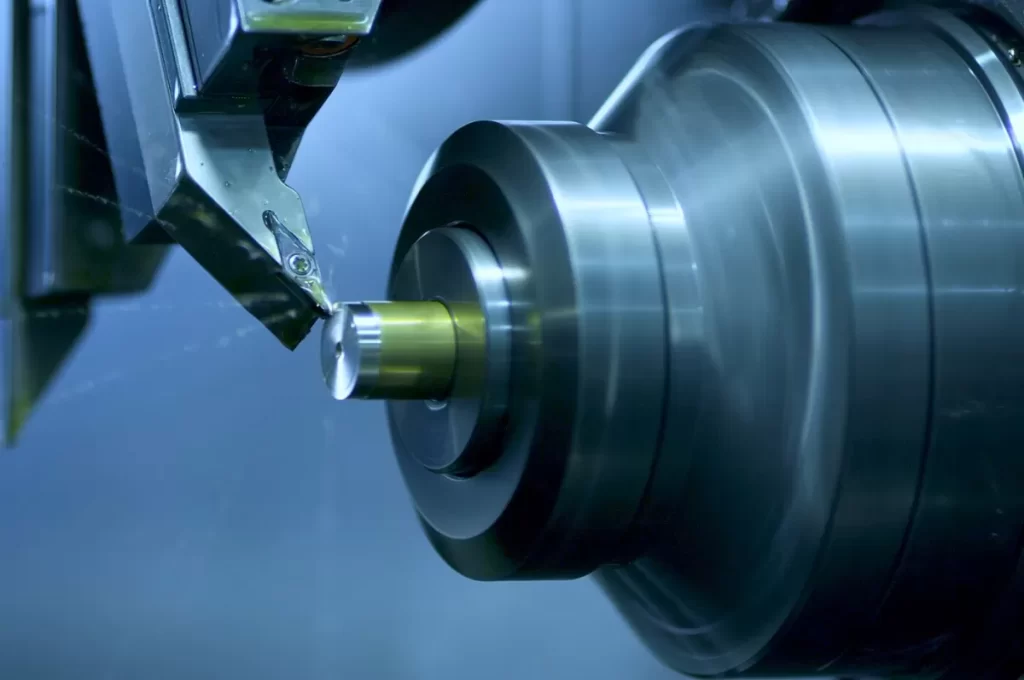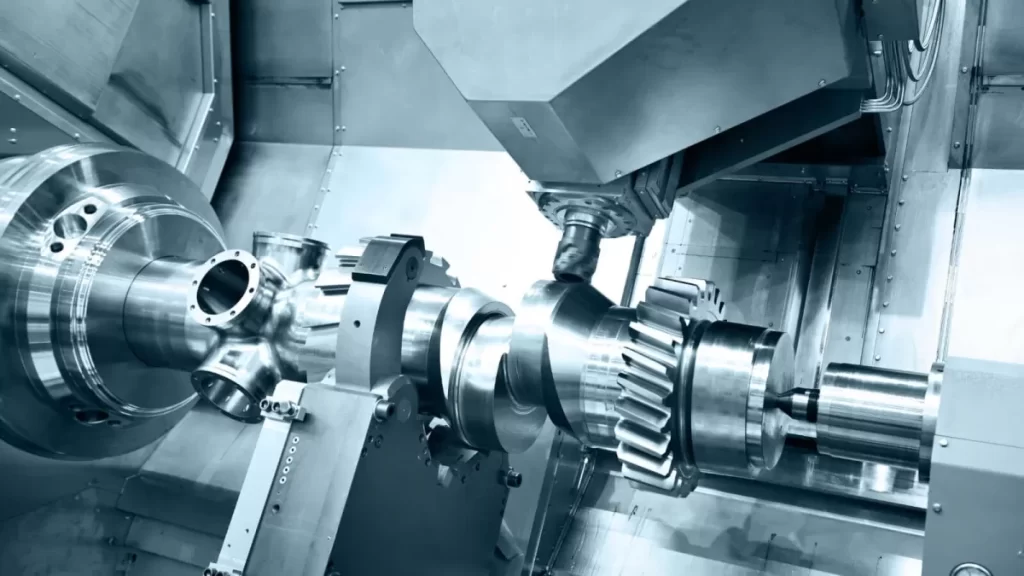Are you torn between sheet metal stamping and CNC machining for your next manufacturing project? Choosing the right process can make or break your budget, timeline, and part quality. As experts at HYCNC, we’ve helped countless businesses navigate this decision with confidence, leveraging decades of experience in precision manufacturing. In this guide, you’ll uncover the key differences, advantages, and real-world applications of sheet metal stamping vs. CNC machining, empowering you to pick the perfect method for your needs. Let’s jump in!
What is Sheet Metal Stamping
Definition
Sheet metal stamping is a manufacturing process that shapes metal sheets into specific forms using a press and dies. It falls under metal forming techniques where a flat metal sheet is cut, bent, or punched to create parts used in various industries.
Key Processes
- Blanking: Cutting flat metal sheets into basic shapes
- Piercing: Punching holes or cutouts
- Bending: Creating angles or curves in the metal
- Forming: Shaping the sheet into three-dimensional parts
- Coining: Applying pressure to improve surface finish and detail
Materials
Typical materials for sheet metal stamping include:
- Steel (carbon and stainless)
- Aluminum
- Copper
- Brass
- Other alloys depending on the application
Advantages
- Ideal for high-volume production due to fast cycle times
- Consistent part quality with repeatability
- Low per-piece cost once tooling is ready
- Efficient use of material with minimal waste
Limitations
- High initial tooling cost and design time
- Less flexible for small production runs or design changes
- Limited to materials and thicknesses suitable for stamping
- Complex shapes may require secondary operations or may be difficult to achieve directly
Sheet metal stamping is a reliable, cost-effective choice when you need large batches of metal parts with consistent quality. However, upfront investment and design limitations mean it’s not always the best fit for every project.
What is CNC Machining
Definition
CNC machining stands for Computer Numerical Control machining. It’s a manufacturing process where pre-programmed computer software directs the movement of cutting tools and machines to shape raw materials into precise parts. This automation allows for highly accurate, repeatable production, making it a go-to technique for precision manufacturing.
Key Processes
- Milling: Removing material with rotary cutters to create complex shapes.
- Turning: Rotating the material while a cutting tool shapes it, often used for round parts.
- Drilling: Creating holes with cutting tools controlled by CNC programs.
- Grinding: Fine machining process to achieve tight tolerances and smooth finishes.
These combined processes allow CNC machining to handle a wide variety of part designs.
Materials
CNC machining works well with metals like aluminum, steel, brass, and titanium, plus plastics such as nylon, acrylic, and polycarbonate. This flexibility makes it ideal for producing parts used in aerospace, automotive, and consumer products.
Advantages
- Precision: CNC can hold tight tolerances down to thousandths of an inch.
- Repeatability: Once programmed, it can produce identical parts quickly and consistently.
- Complexity: Capable of machining detailed and intricate designs impossible with manual methods.
- Low Waste: Efficient use of materials reduces scrap, making it cost-effective.
Limitations
- Setup Time: Programming the CNC machine can take time, making it less ideal for one-off parts.
- Cost: Initial equipment and programming costs can be high, especially for small runs.
- Material Waste: Since it’s subtractive manufacturing, there’s always some material removed and wasted.
- Size Restrictions: Machine bed size limits the size of parts that can be produced.
Overall, CNC machining offers unmatched precision and versatility but works best when the part design needs high accuracy or complexity and production volumes are moderate to high. For simpler or very large-volume parts, other methods like sheet metal stamping might be more efficient.
Head-to-Head Comparison Sheet Metal Stamping vs CNC Machining
Cost
- Sheet Metal Stamping: Ideal for high-volume runs. Initial tooling can be costly, but per-part cost drops significantly with large orders.
- CNC Machining: Lower startup cost since no special tooling is needed. Better for small to medium production runs, but cost per part stays relatively steady.
Precision
- Sheet Metal Stamping: Good for consistent shapes but less suited for extremely tight tolerances or detailed features.
- CNC Machining: Highly precise, capable of achieving tight tolerances and complex details ideal for precision manufacturing.
Production Speed
- Sheet Metal Stamping: Fast after setup, perfect for mass production of identical parts.
- CNC Machining: Slower per piece compared to stamping, better for shorter runs or prototypes.
Material Suitability
- Sheet Metal Stamping: Works best with thin sheets of ductile metals like aluminum, steel, and copper.
- CNC Machining: Handles a wider variety of materials, including tougher metals and plastics that may not be suitable for stamping.
Complexity
- Sheet Metal Stamping: Efficient for simple to moderate shapes, struggles with intricate designs.
- CNC Machining: Excels at complex geometries and detailed features.
Applications
- Sheet Metal Stamping: Automotive parts, appliance panels, brackets, and other high-volume metal parts.
- CNC Machining: Aerospace components, intricate prototypes, custom parts, and low-volume production.
Table Comparison
| Feature | Sheet Metal Stamping | CNC Machining |
|---|---|---|
| Cost | High initial, low per part (high volume) | Low initial, steady per part |
| Precision | Moderate accuracy | High precision |
| Production Speed | Very fast for large batches | Slower, better for small runs |
| Material Suitability | Thin ductile metals | Wide range including tough metals |
| Complexity | Simple to moderate shapes | Complex, detailed parts |
| Typical Applications | Automotive, appliances | Aerospace, prototypes, custom parts |
Real-World Applications and Case Studies
Stamping Example
Sheet metal stamping plays a big role in the automotive industry here in the U.S. For example, car manufacturers use stamping to produce body panels, brackets, and other parts quickly and consistently. A typical case is stamping steel sheets to create door panels—this method allows for high-volume production with tight cost control. The process is fast and ideal for large runs where the same part is needed over and over.
CNC Machining Example
On the other hand, CNC machining shines in aerospace and medical device manufacturing. For instance, aerospace companies often use CNC milling to create complex parts like engine components or structural brackets that require high precision and fine tolerances. The flexibility of CNC machining means it’s perfect for custom or lower-volume parts that need exact shapes and finishes.
Industry Insights
Both sheet metal stamping and CNC machining are essential in manufacturing today, but they serve different needs. Stamping is best for high-volume, simpler shapes where cost and speed matter most. CNC machining is the go-to when precision, customization, and complex geometries are the priorities. Many U.S. manufacturers choose a mix of both processes depending on the project demands, material, and overall budget to get the best balance of quality and efficiency.
How to Choose the Right Process for Your Project
Decision Factors
Picking between sheet metal stamping and CNC machining depends on what your project needs most. Here are some key factors to consider:
- Production Volume: Stamping is perfect for high-volume runs because it’s fast and cost-efficient once the tooling is set up. CNC machining works better for low to medium volume or prototypes.
- Material Type: Some metals are easier to stamp, like thin steel or aluminum sheets. CNC machining can handle a wider range of materials, including tougher alloys.
- Complexity: If your design has complex shapes or tight tolerances, CNC machining offers more precision and flexibility.
- Cost: Upfront tooling costs for stamping are higher but lower per part in large volumes. CNC machining has minimal setup costs but higher unit cost at scale.
- Lead Time: CNC machining can often deliver faster for one-offs or small batches, while stamping takes longer upfront but speeds up in mass production.
- Tolerance and Finish: Projects needing tighter tolerances and detailed finishes often lean towards CNC machining.
Checklist for Choosing
- How many parts do you need?
- What material are you working with?
- Does your design have sharp corners or complex features?
- What is your acceptable tolerance range?
- What deadlines and budget are you working under?
HYCNC Expertise
At HYCNC, we understand these factors deeply. Whether you lean toward sheet metal stamping or advanced CNC machining services, our team guides you on the best route for your project. We bring decades of experience in precision manufacturing and tailor solutions to balance cost, speed, and quality.
We use state-of-the-art tools that maximize efficiency while keeping your material and design needs in mind. Our experts are ready to help you decide and ensure your parts come out exactly how you want.
For more on how we handle complex parts and tight tolerances, check out our detailed CNC machining services and insights on sheet metal manufacturing. Let’s get your project moving the right way.
Why Choose HYCNC for Your Manufacturing Needs
Expertise
At HYCNC, we bring years of hands-on experience in both sheet metal stamping and CNC machining services. Our team understands the nuances of precision manufacturing and metal forming techniques, ensuring your project gets the right process for optimal results. Whether you’re working on automotive parts production or aerospace components, our skilled engineers deliver consistent quality you can trust.
Technology
We invest in the latest CNC milling machines, stamping presses, and automation tools to stay ahead in manufacturing tolerances and production speed. This technology not only improves accuracy but also reduces turnaround time for both low and high-volume production runs. Our state-of-the-art equipment supports complex geometries and fine details, making us a go-to for precision machining and sheet metal fabrication.
Custom Solutions
Every project is unique. That’s why HYCNC offers tailored solutions to match your specific material requirements, cost restraints, and delivery timelines. From initial design consultation to final part inspection, we work closely with you to ensure your needs are met without compromise. Our flexible approach allows for seamless integration of sheet metal stamping and CNC machining when your project demands a hybrid manufacturing strategy.
Call to Action
Ready to bring your next project to life with reliable sheet metal stamping or CNC machining? Contact HYCNC today and let our expertise and advanced technology provide the perfect manufacturing solution. Visit our CNC machining services page to learn more or get a quote now.
FAQs
What materials are best for sheet metal stamping?
Sheet metal stamping works great with metals like steel, aluminum, copper, brass, and stainless steel. These materials offer the right balance of strength and flexibility, making them ideal for high-volume metal stamping processes.
Is CNC machining suitable for high-volume production?
Yes, CNC machining can handle high-volume production, especially with automated setups and multi-axis machines. However, it’s often cost-effective for medium to low volumes or when needing tight tolerances and complex parts.
How can cost be reduced in sheet metal stamping?
Cost savings in sheet metal stamping come from using efficient die designs, selecting common materials, and running large batches to spread out tooling expenses. Early design tweaks also help reduce waste and speed up production.
What tolerances can CNC machining achieve?
CNC machining typically achieves tight tolerances, often around ±0.001 inch (±0.025 mm) or better, depending on the machine and material. This precision level makes CNC ideal for parts where exact fit and finish are crucial.
What is the typical tooling time for stamping projects?
Tooling for sheet metal stamping usually takes a few weeks, depending on the complexity of the dies. This upfront time is an investment that speeds up mass production later, making stamping highly efficient for large runs.
For more on precision standards, check out our precision machining services. If you want tips on sheet metal design, read our guide on designing sheet metal using SolidWorks.




